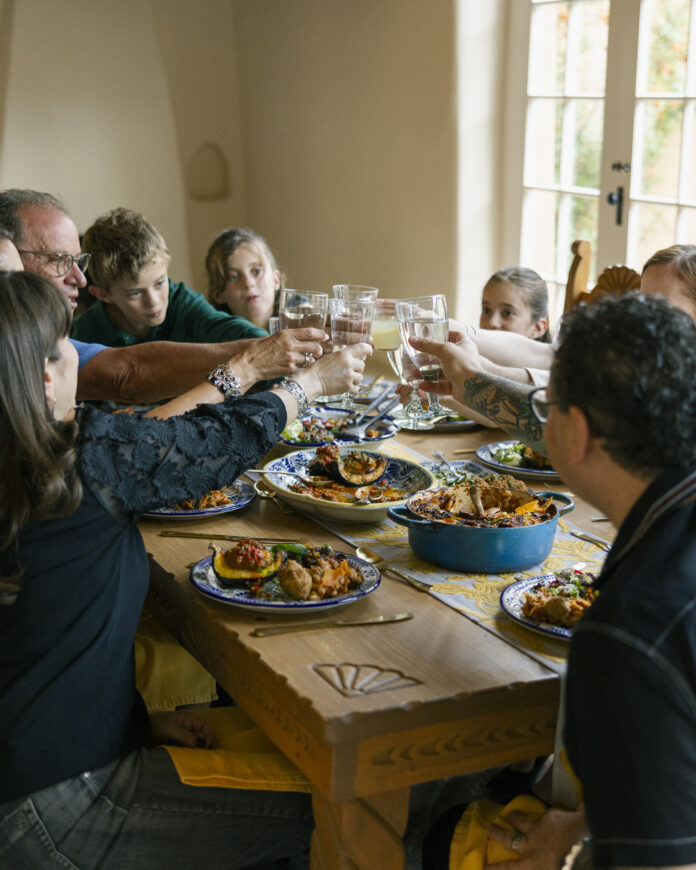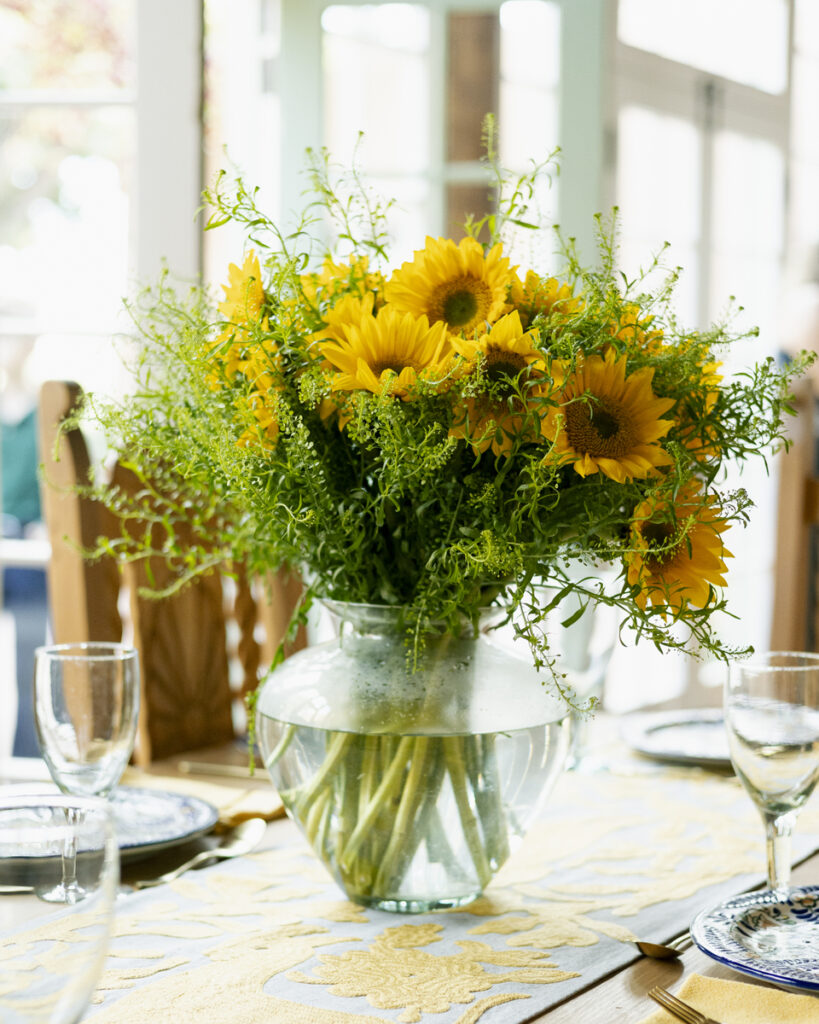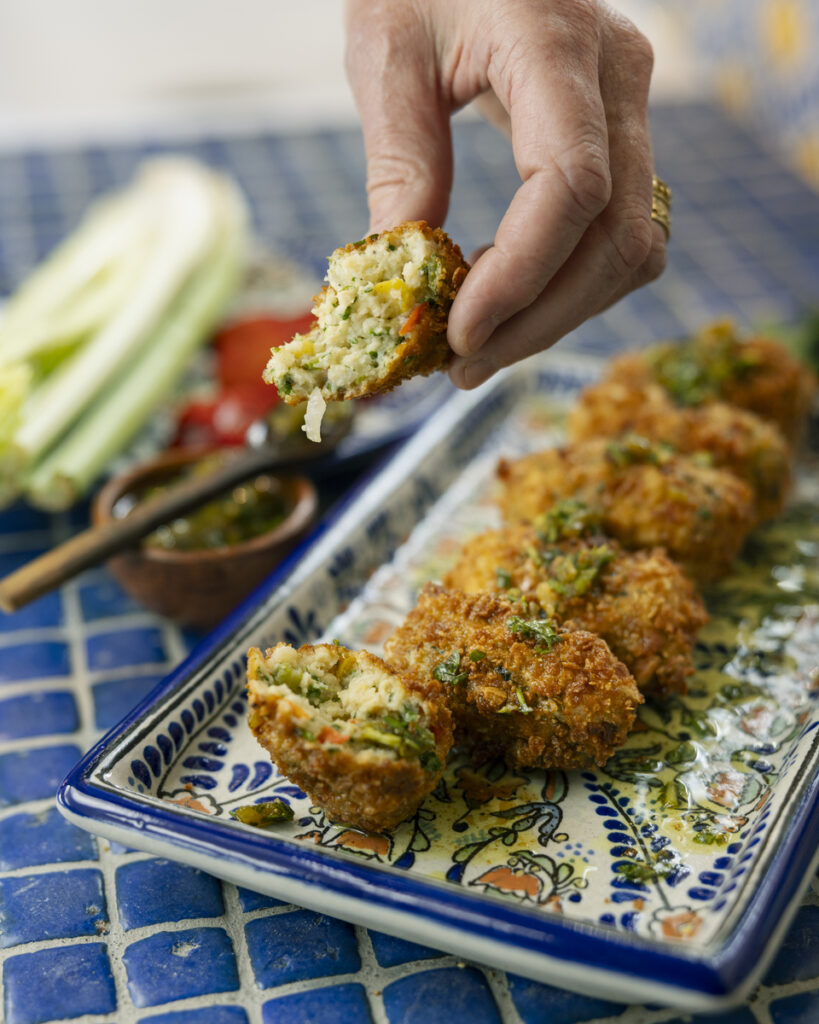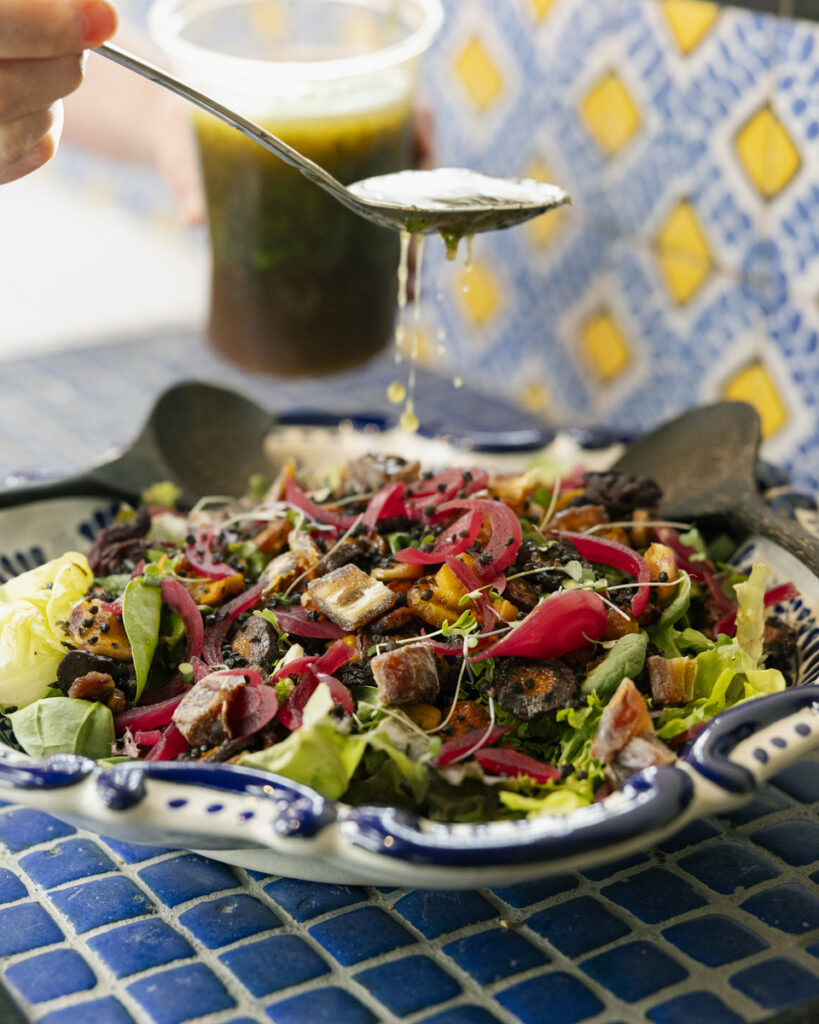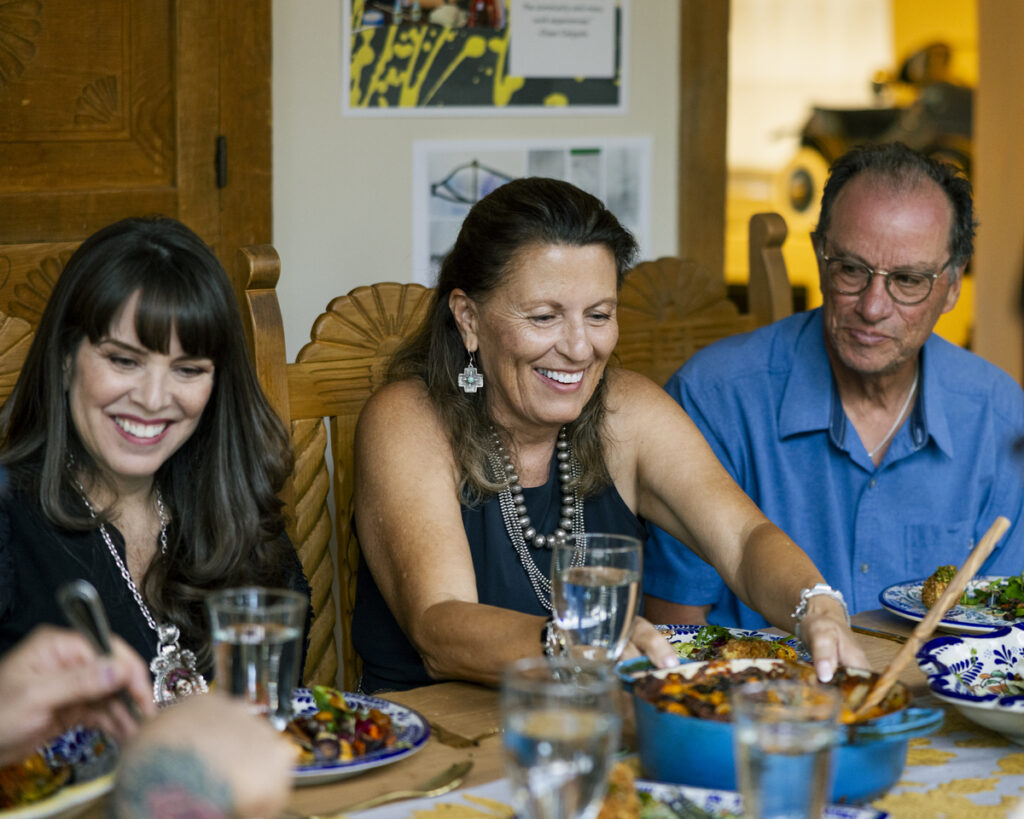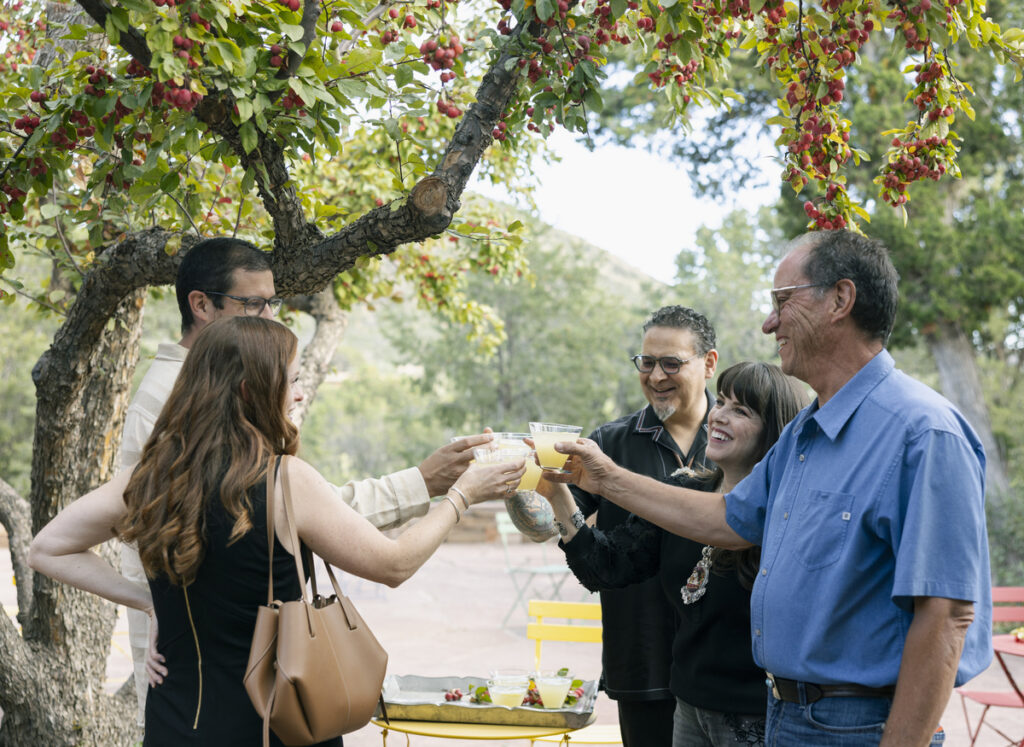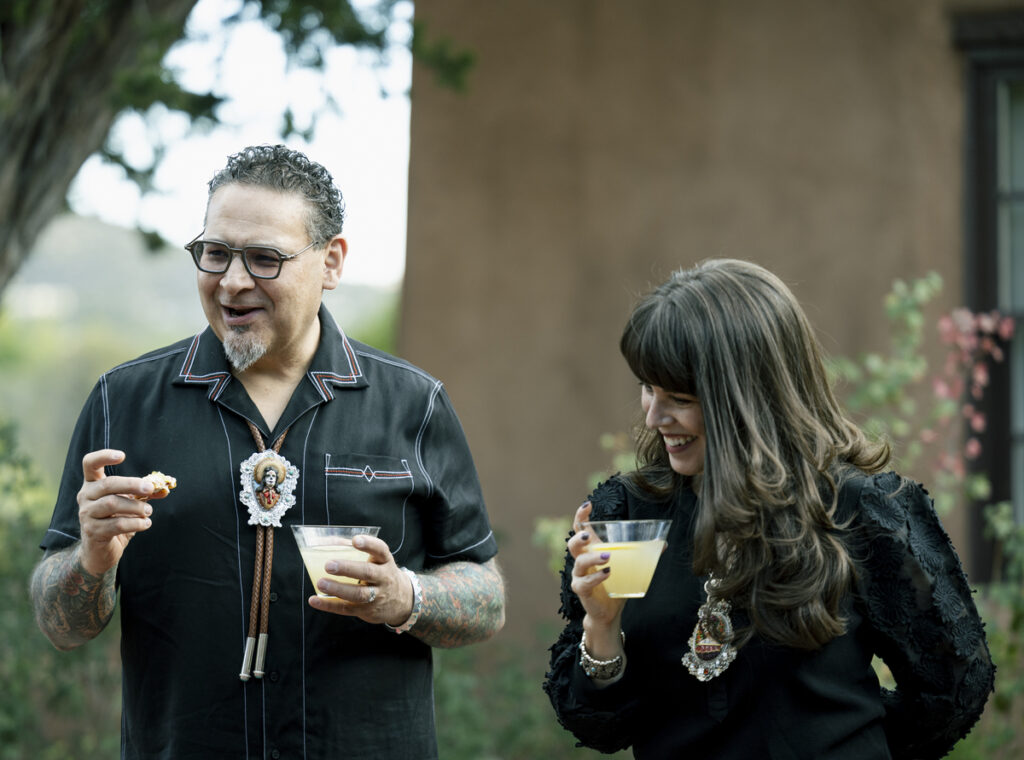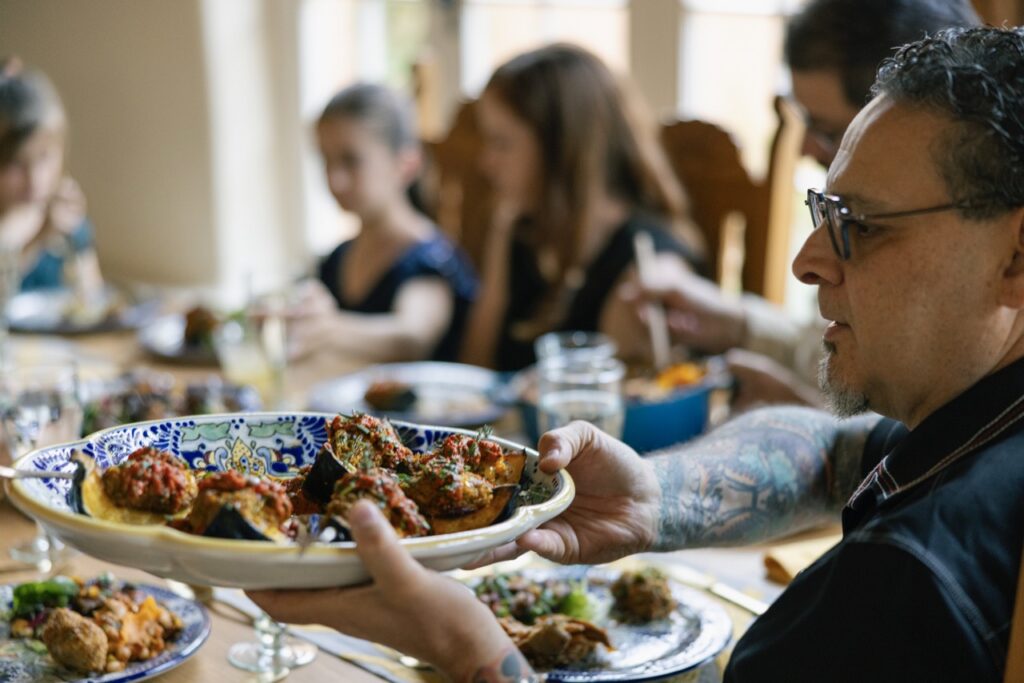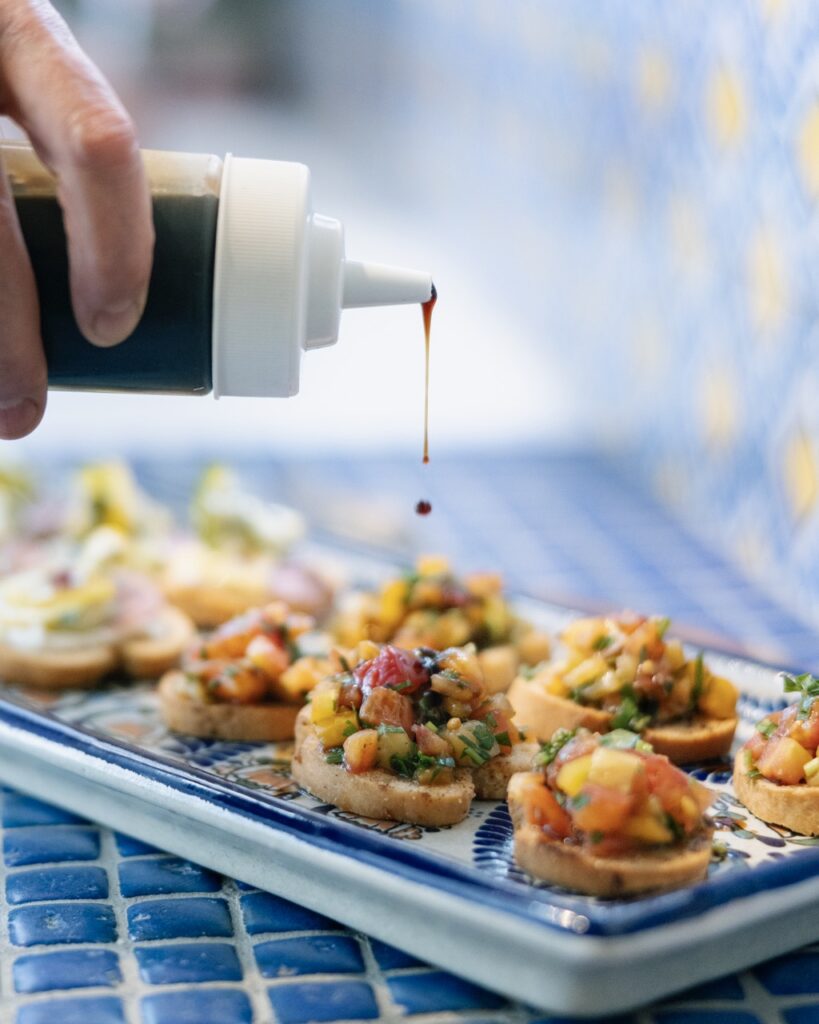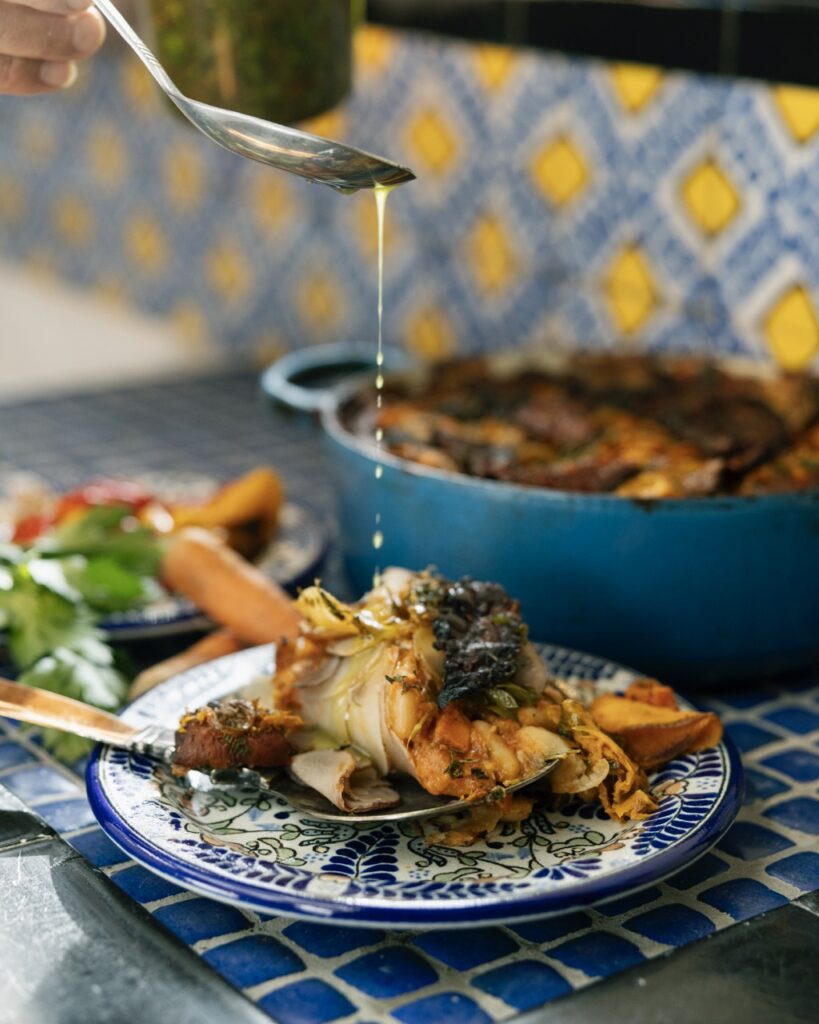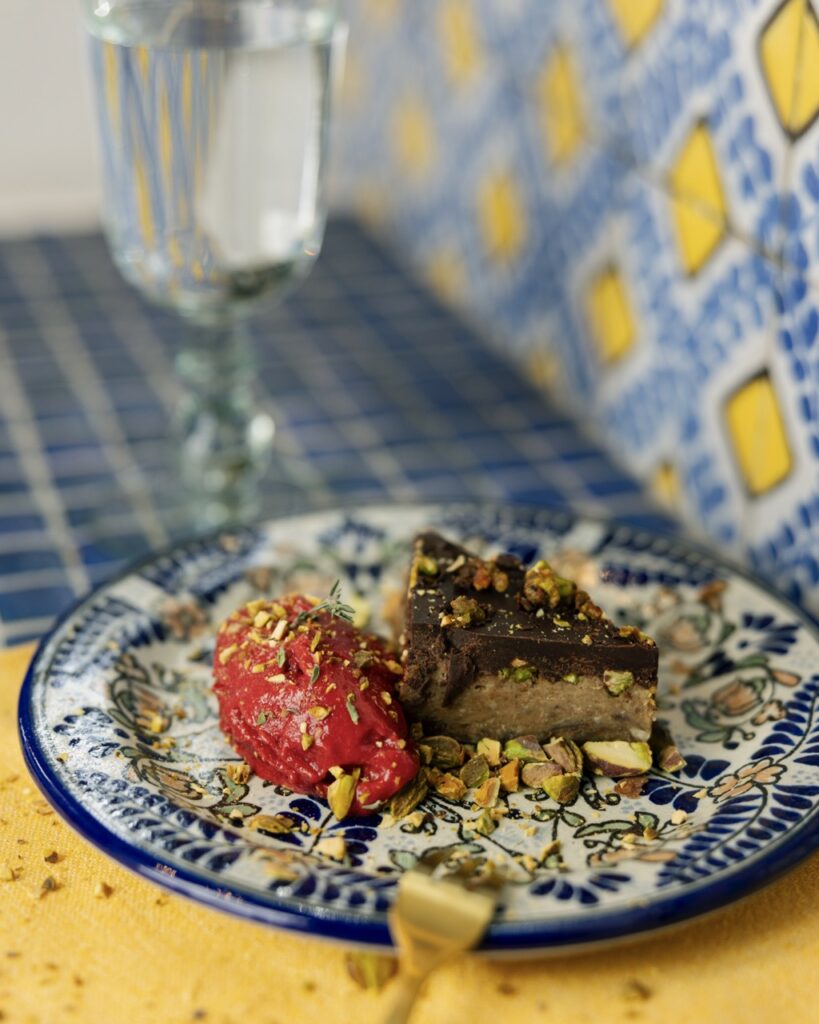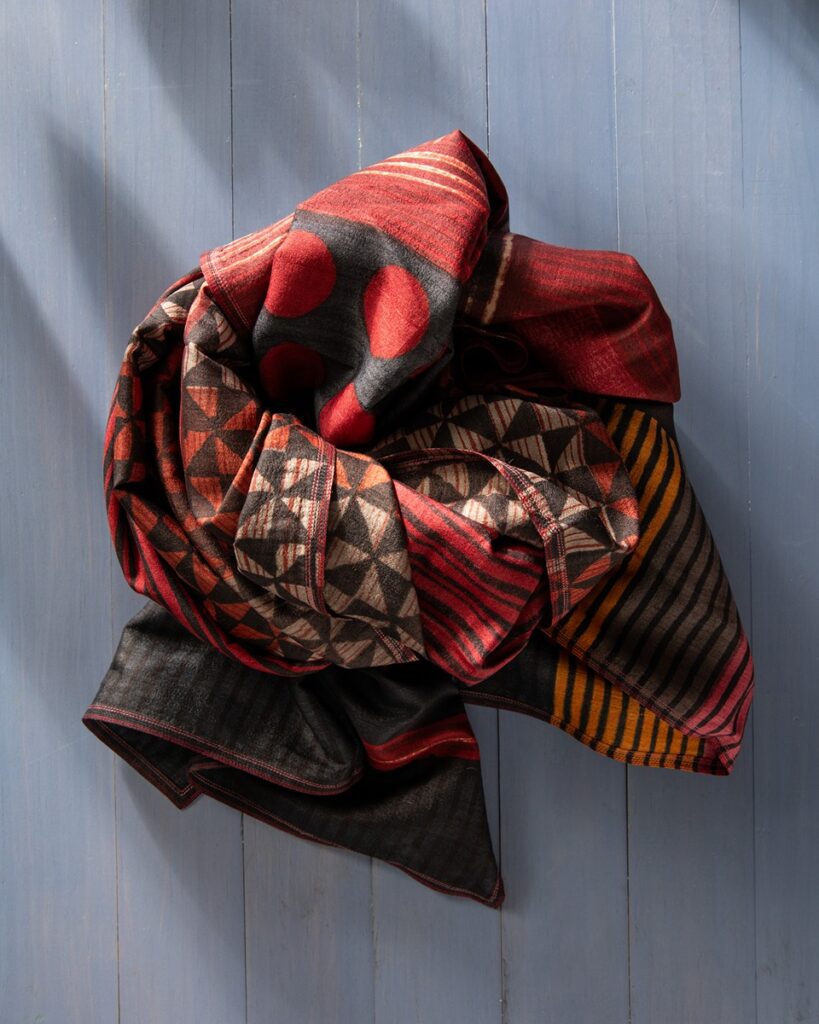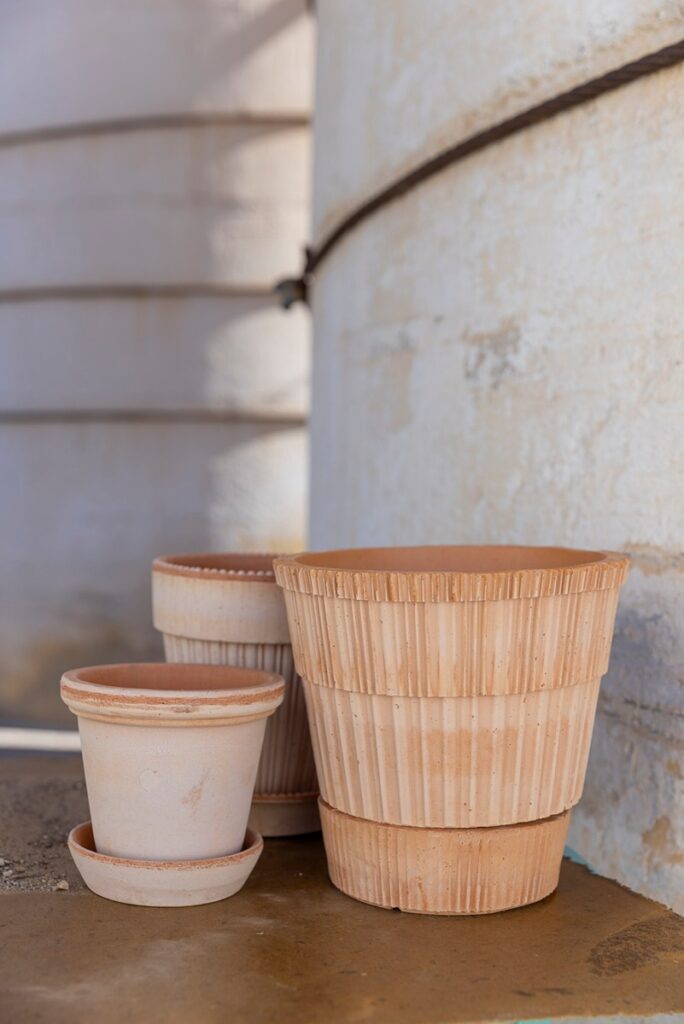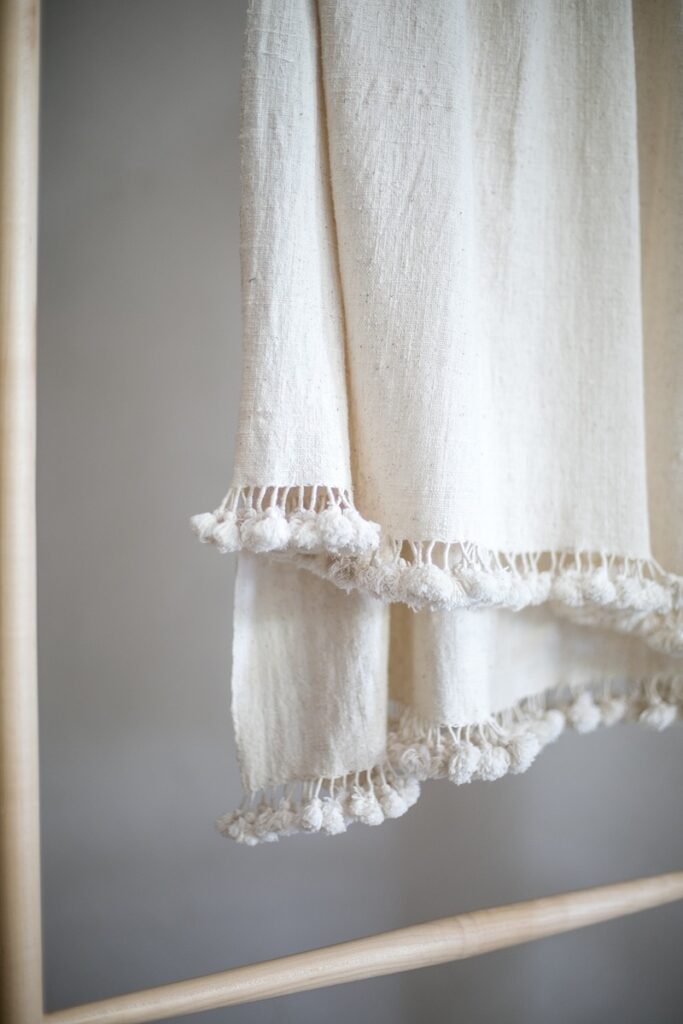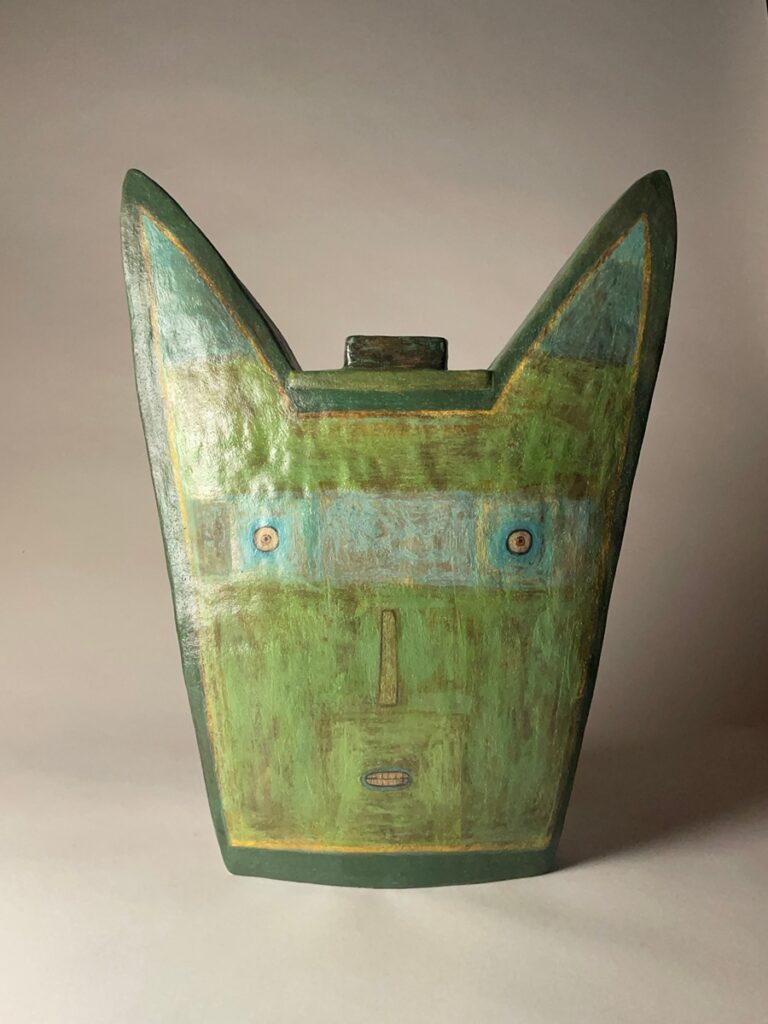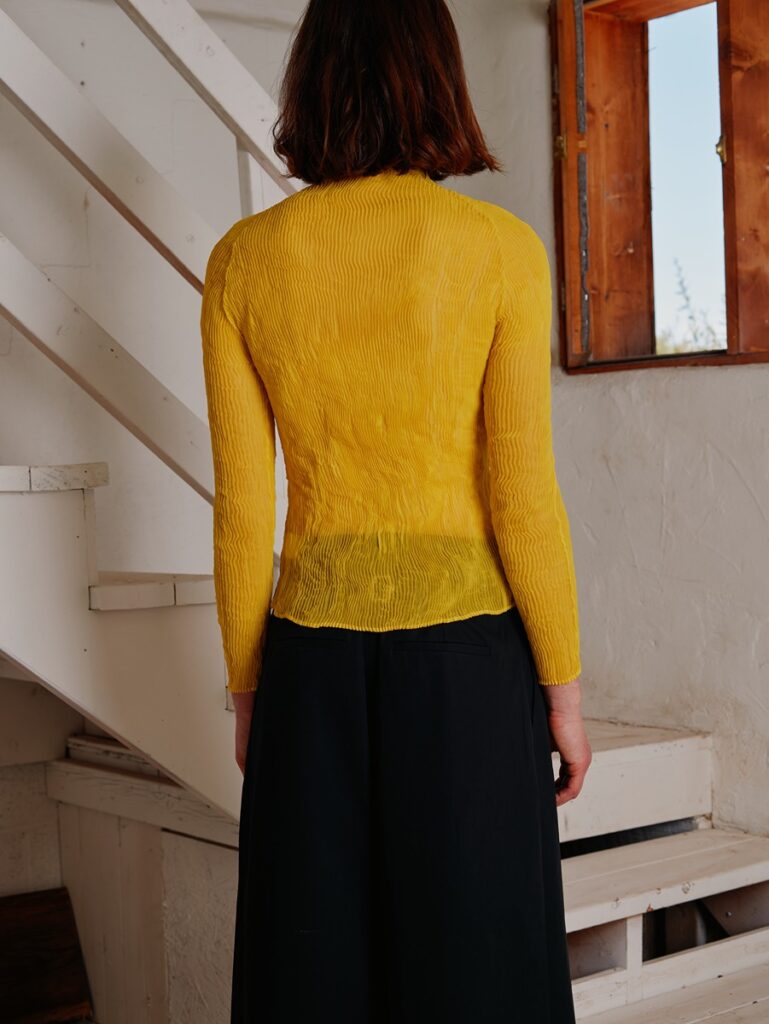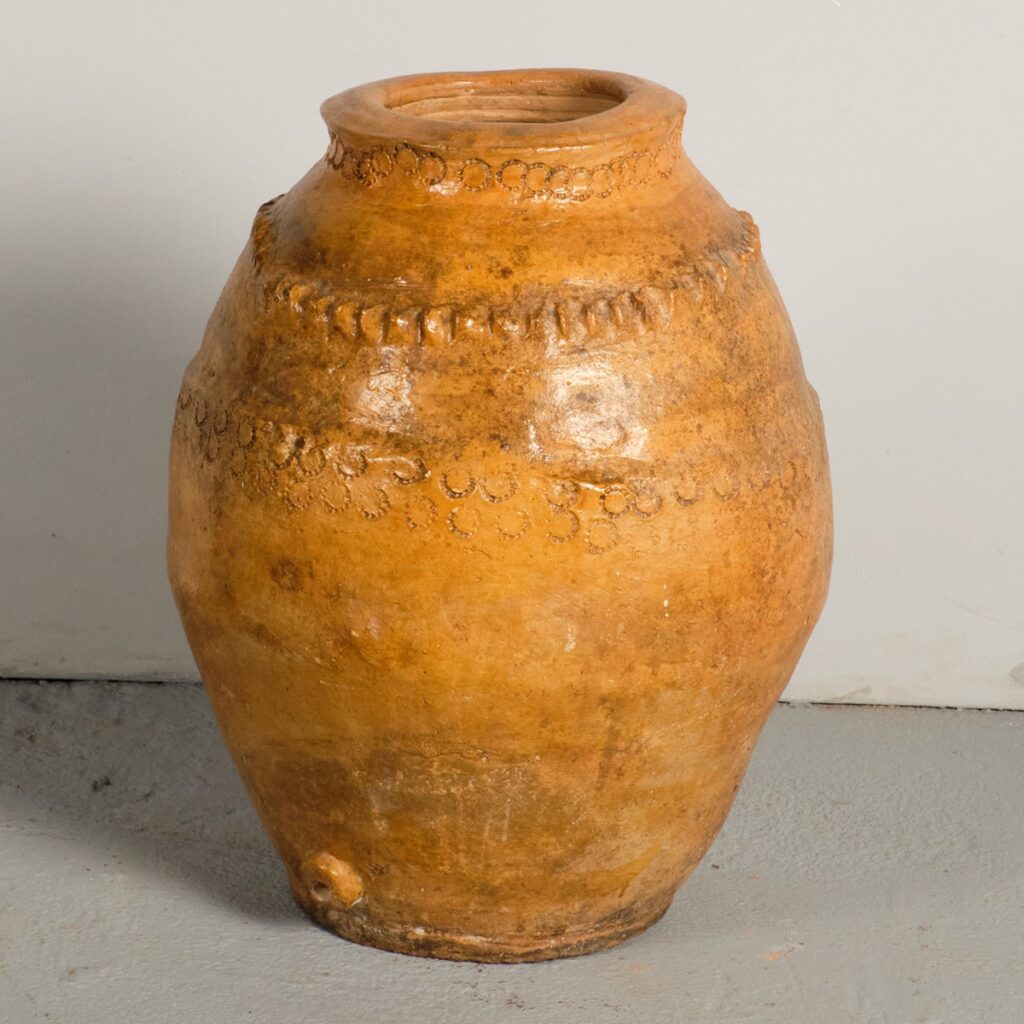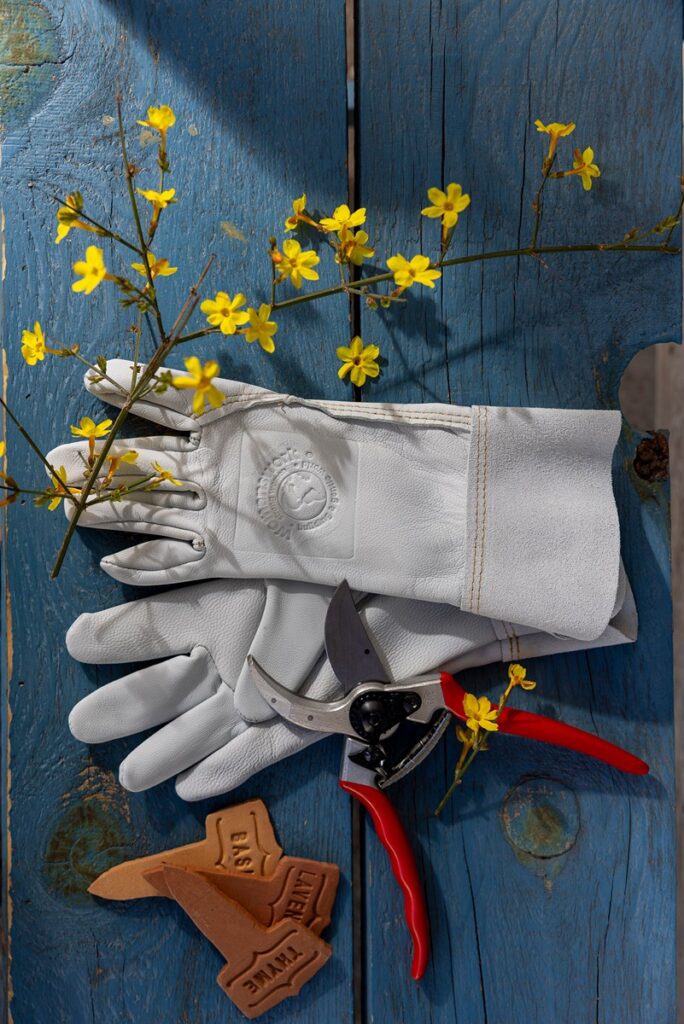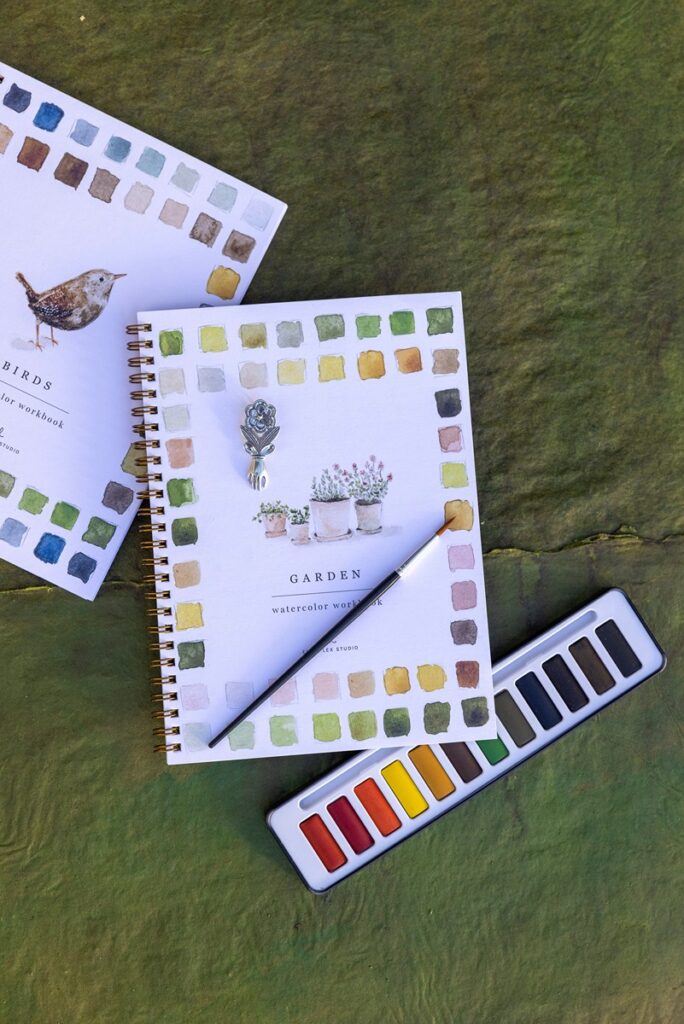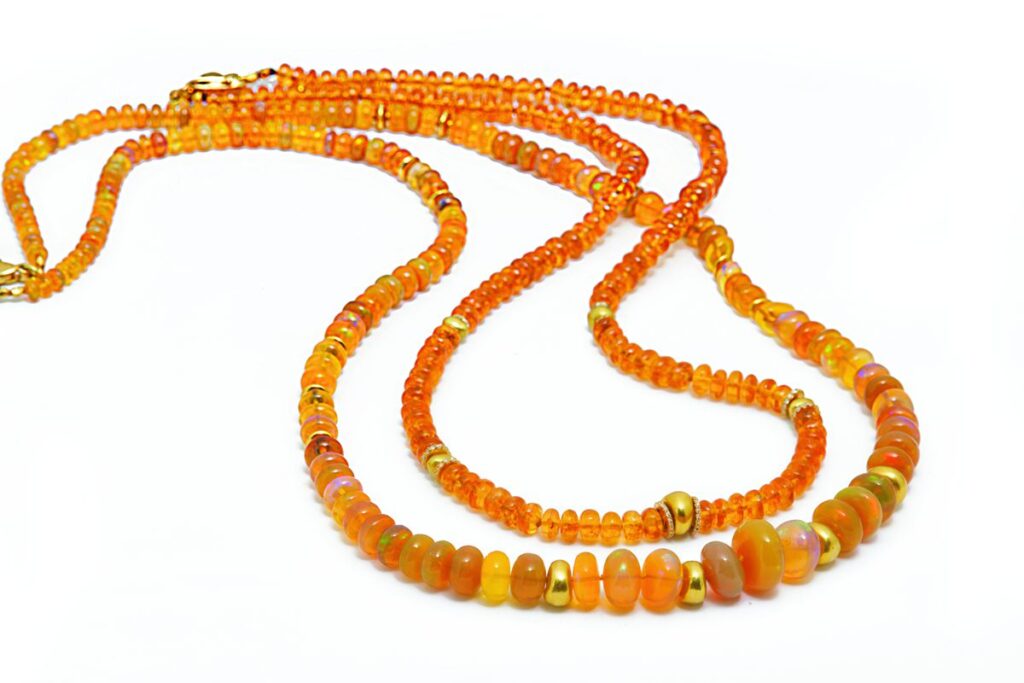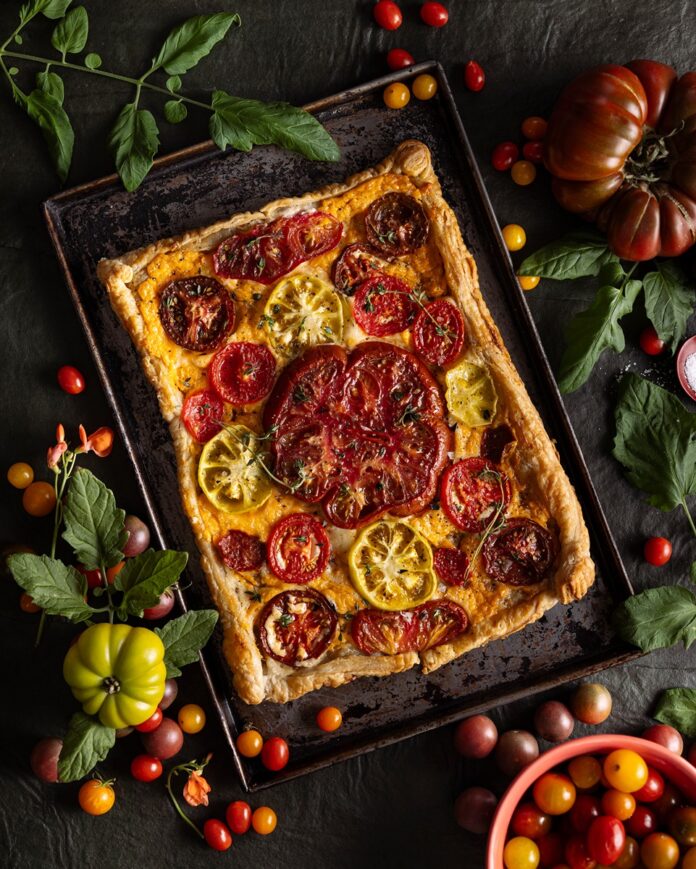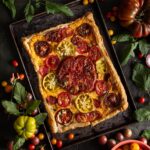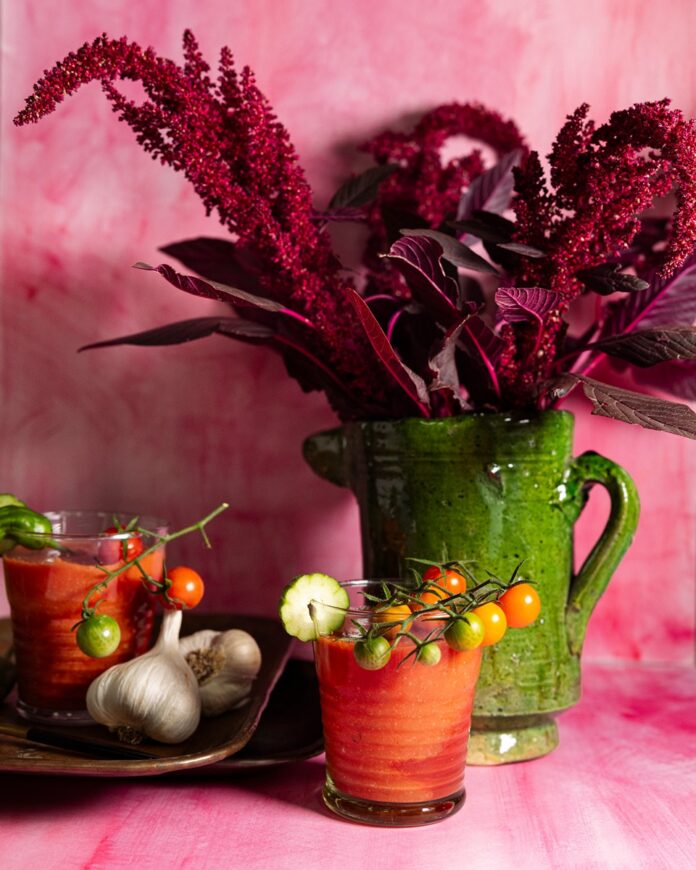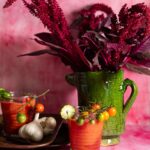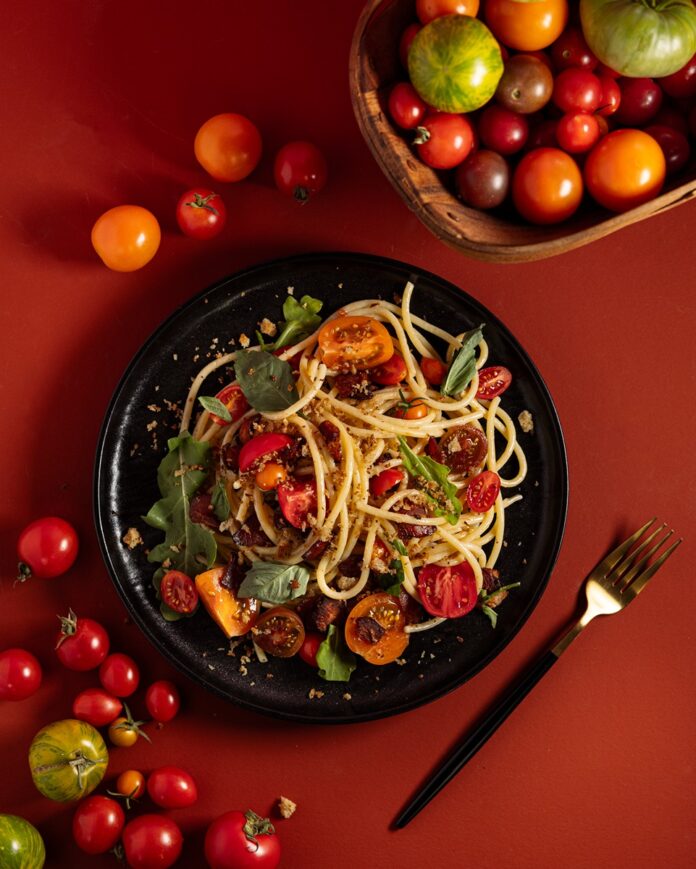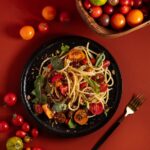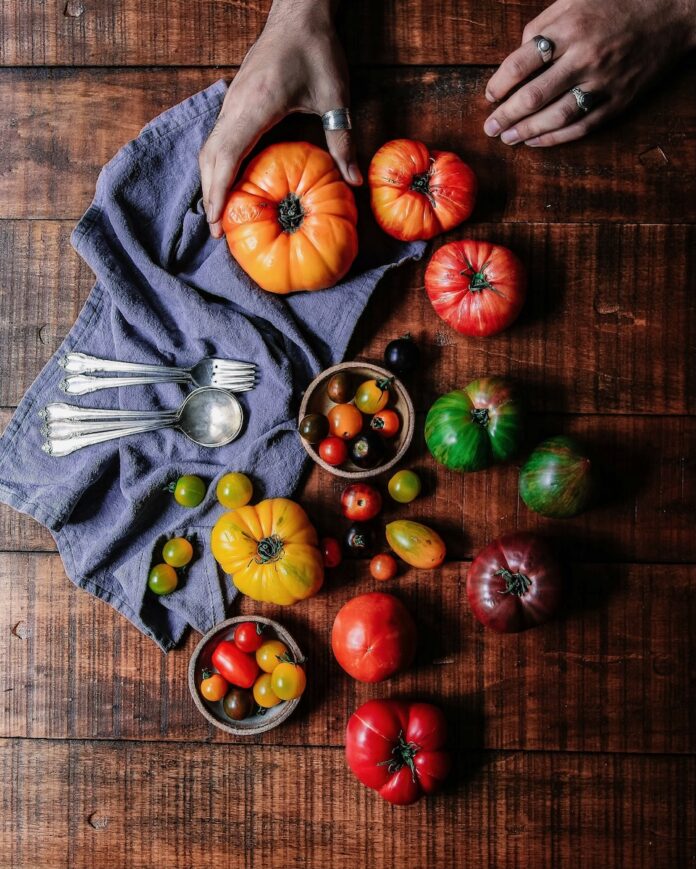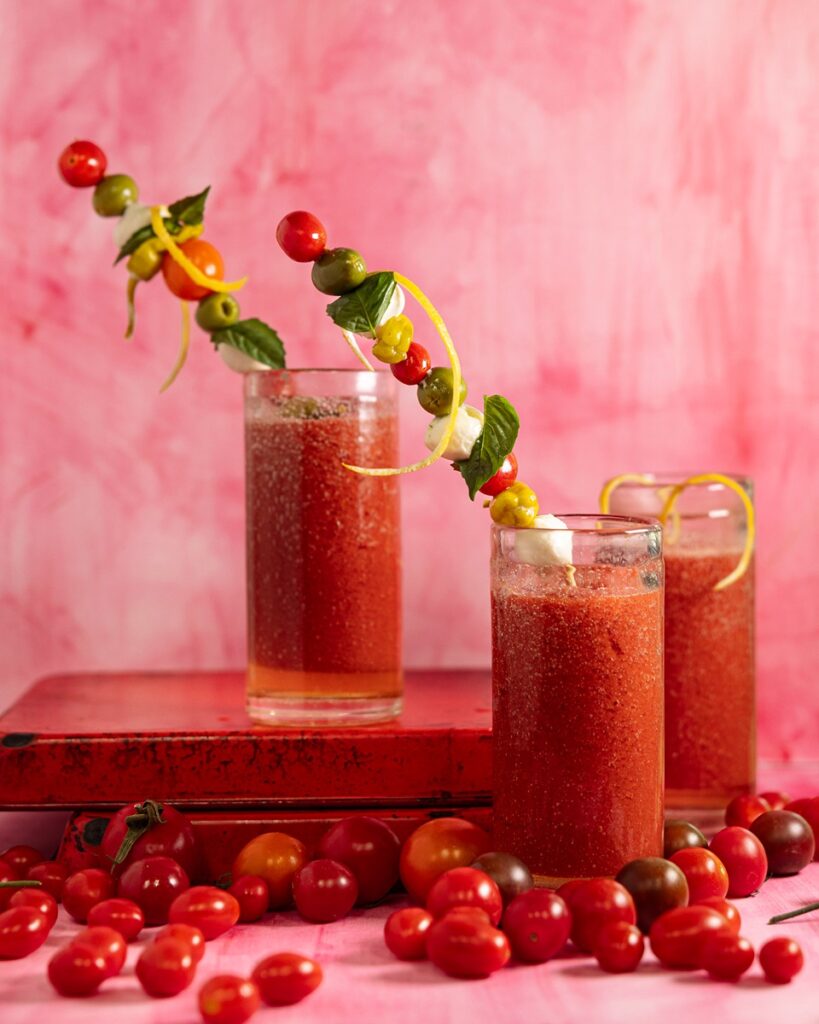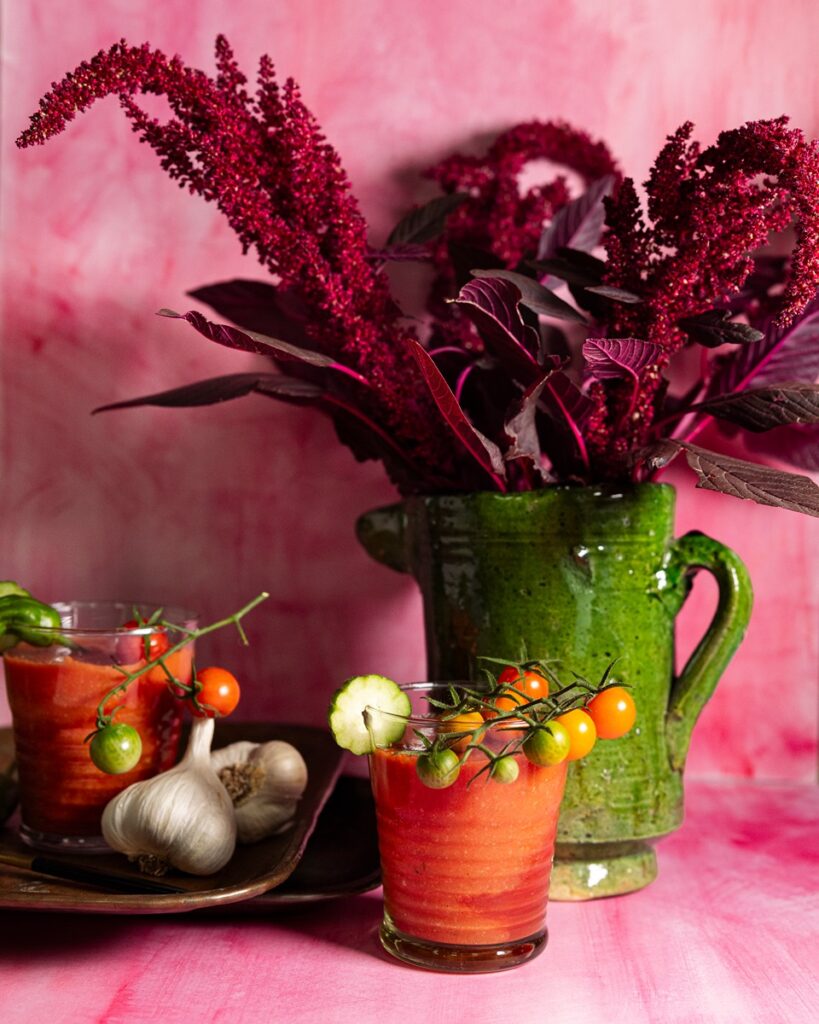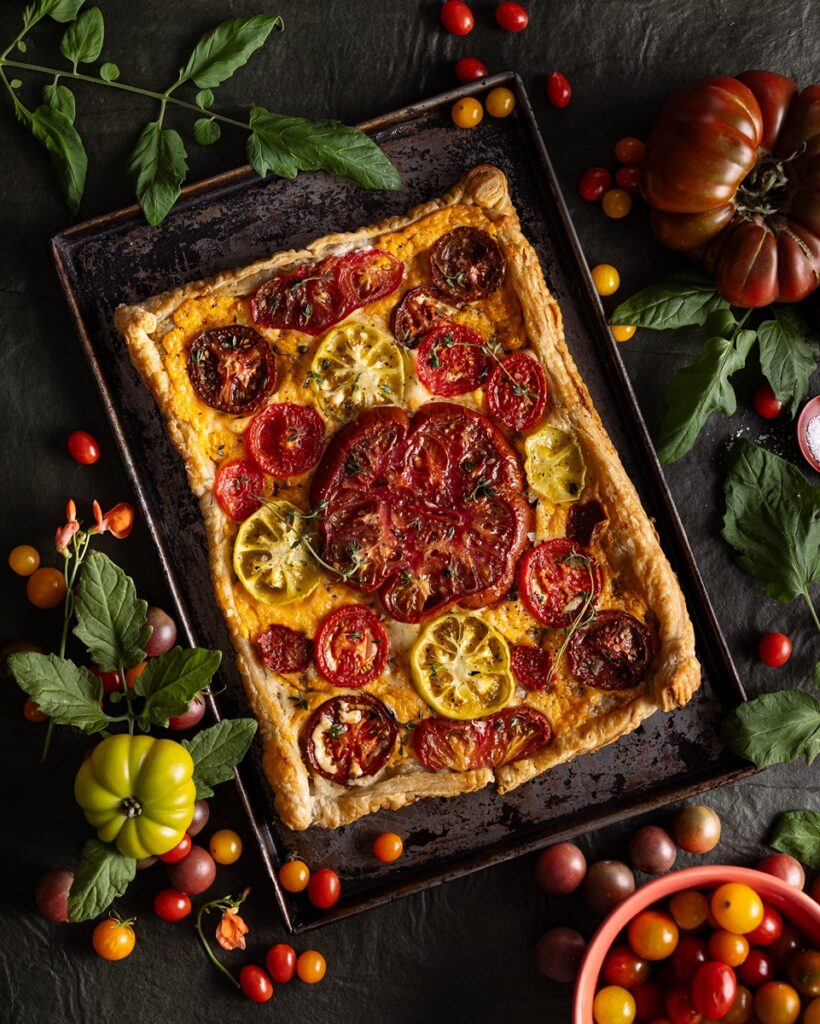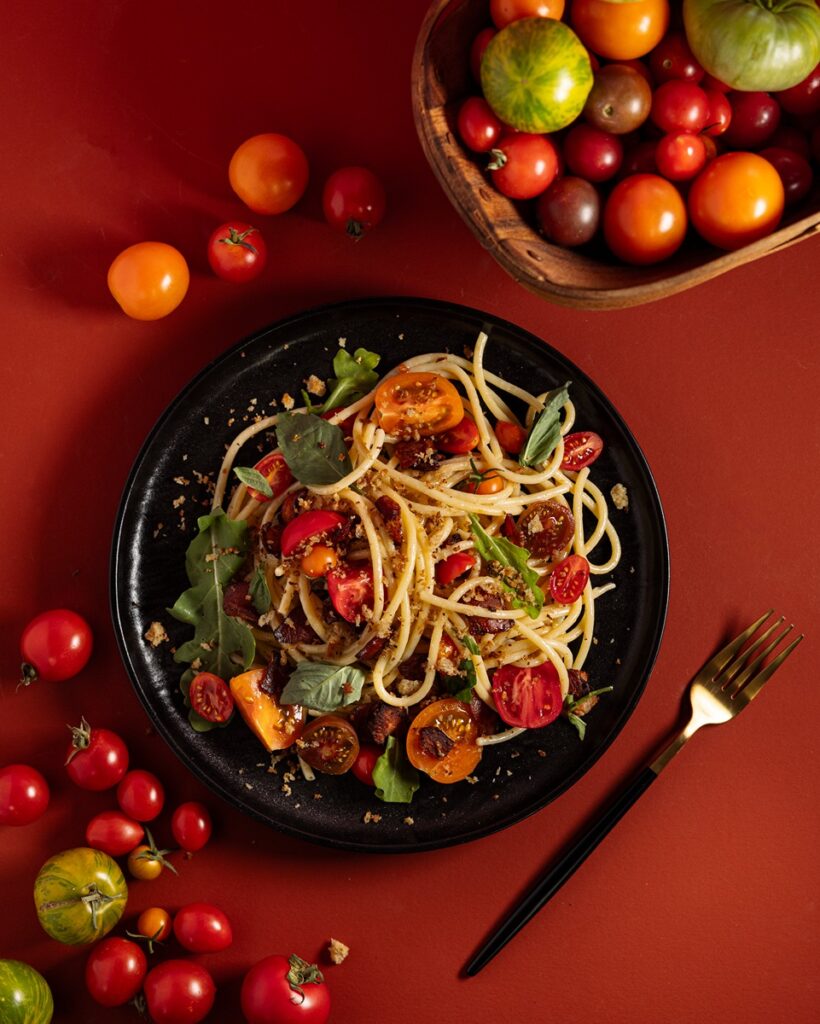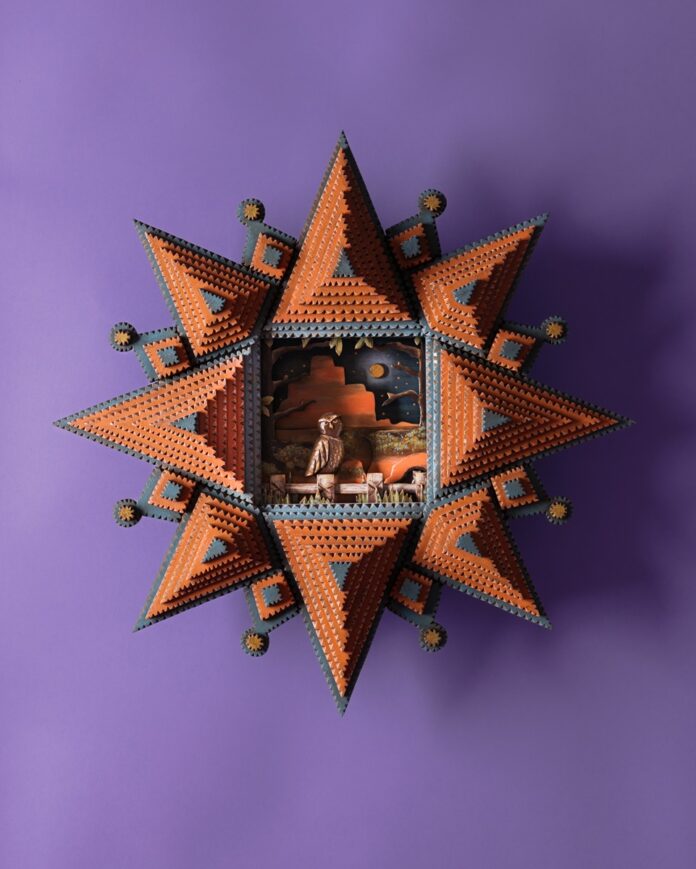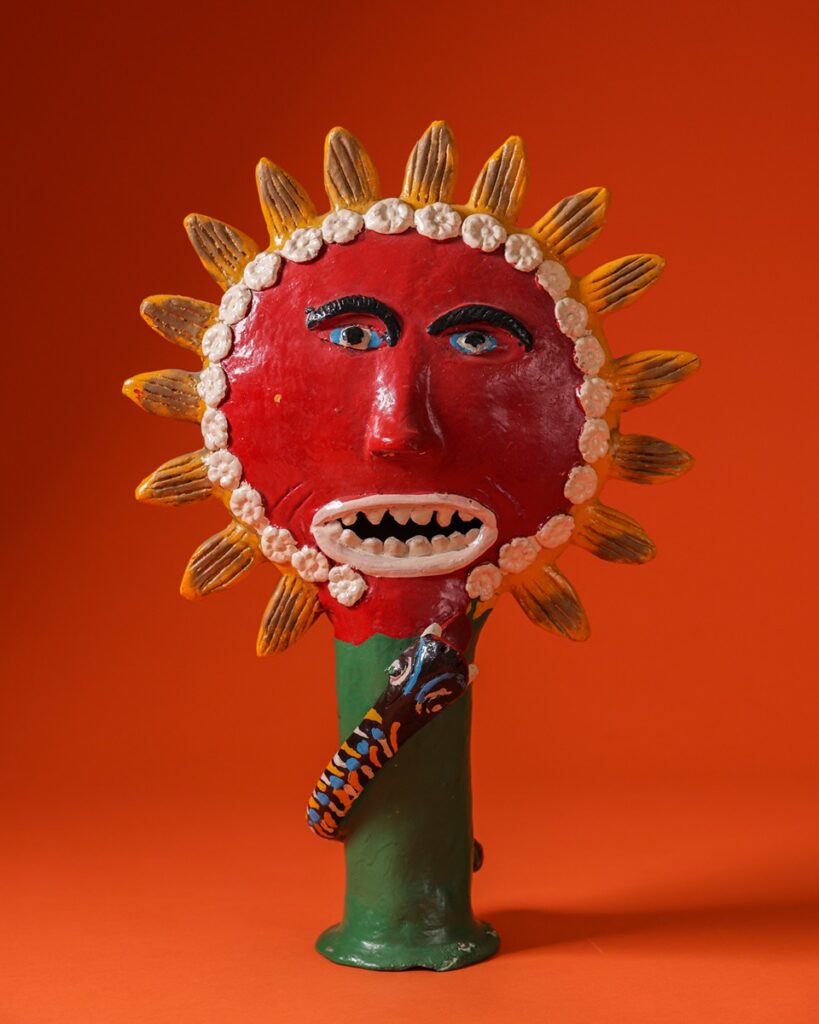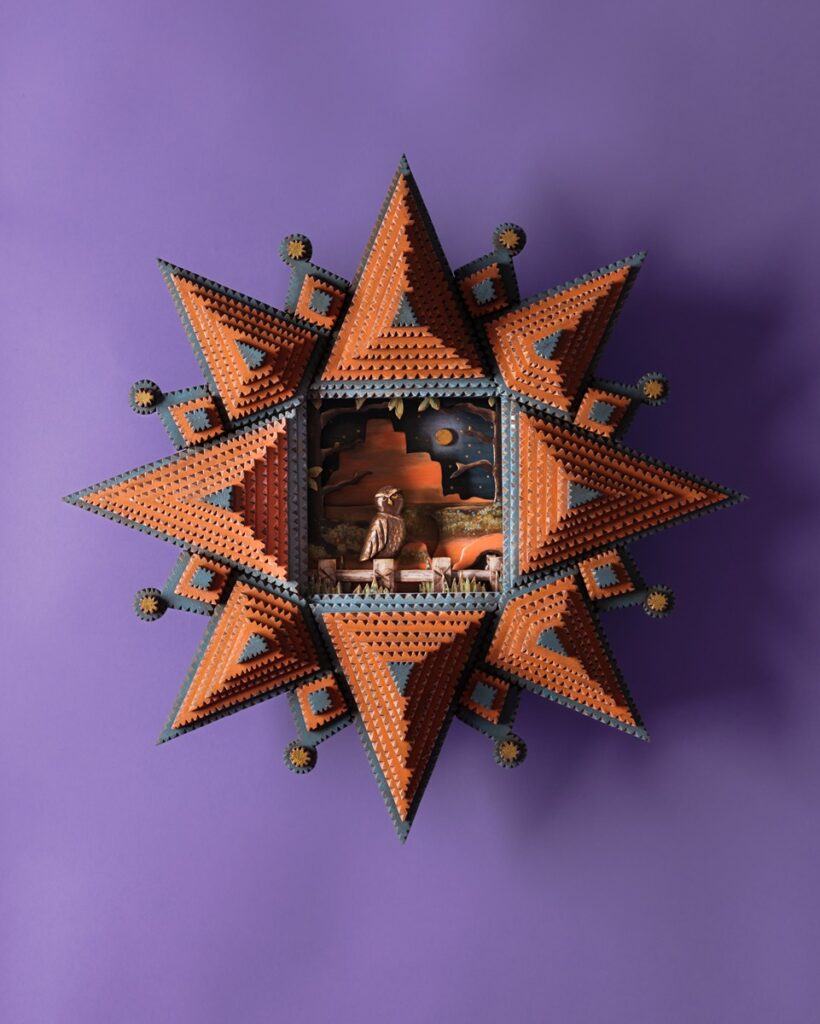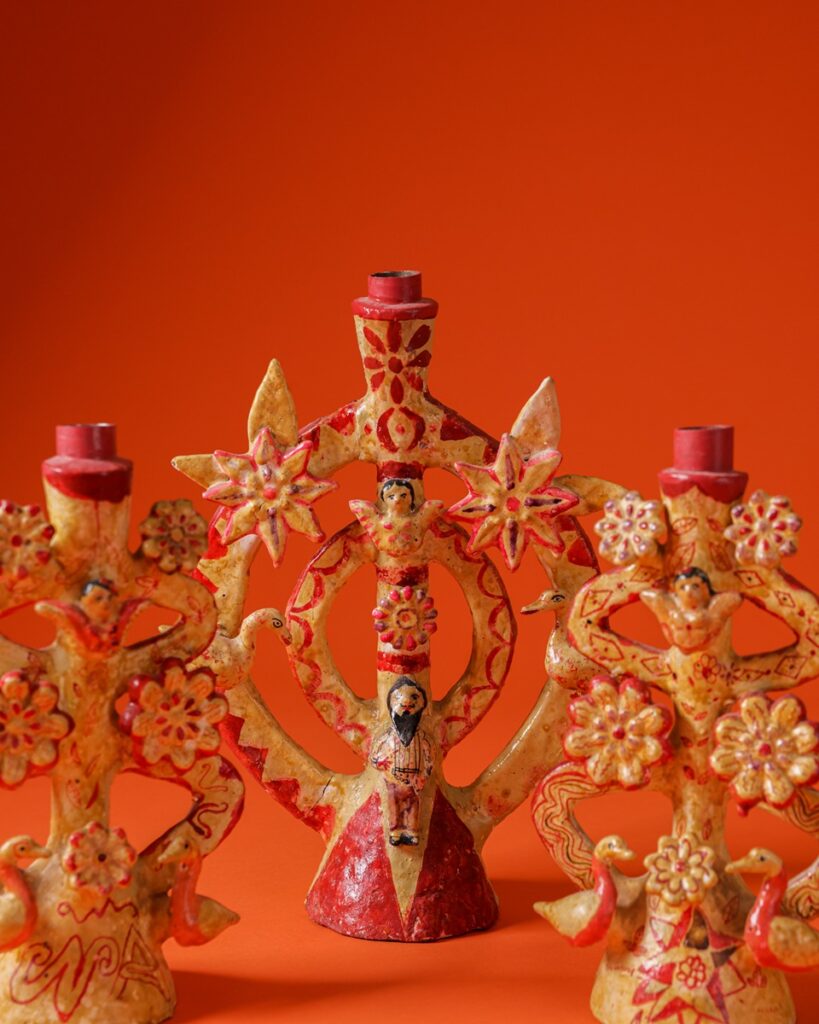High on a mesa at the foot of the Sangre de Cristo mountains, the Santa Fe Opera draws over 80,000 visitors each summer to tailgate, people watch, and of course, experience stellar productions. This year’s lineup is captivating: “It’s going to be a great season, with a mix of new productions and revivals — really something for everyone,” says Board President Lynn Loacker.
Santa Fe Opera’s Summer Season 2025, June 27 – August 23
The season starts off strong with Puccini’s La Boheme. Set in 1920s Paris, “Boheme will be a real feast for the eyes,” says Costume Director Blair Gulledge. This will be the first Santa Fe Opera production of Boheme featuring a truly opulent Café Momus, complete with an eye-catching Art Deco pouf and crystal chandeliers. “It’s going to glitter,” says Properties Director Eileen Garcia. Another focal point Garcia is proud of will be a World War I ambulance, for which she and her team sourced real Model T tires from local enthusiasts.
Other highlights of the season include lesser-seen gems The Turn of the Screw and Die Walküre. Based on Henry James’ novella, Benjamin Britten’s interpretation of The Turn of the Screw will stay true to its Victorian setting in a chilling production embellished by props like an ornate grand piano and antique children’s toys. “The scenery will be stunning, and I think the costumes are perfect to create the world,” says Gulledge. “It’s ominous, overwhelming, but kind of fun and spooky in its own way if you’re a little macabre at heart.”
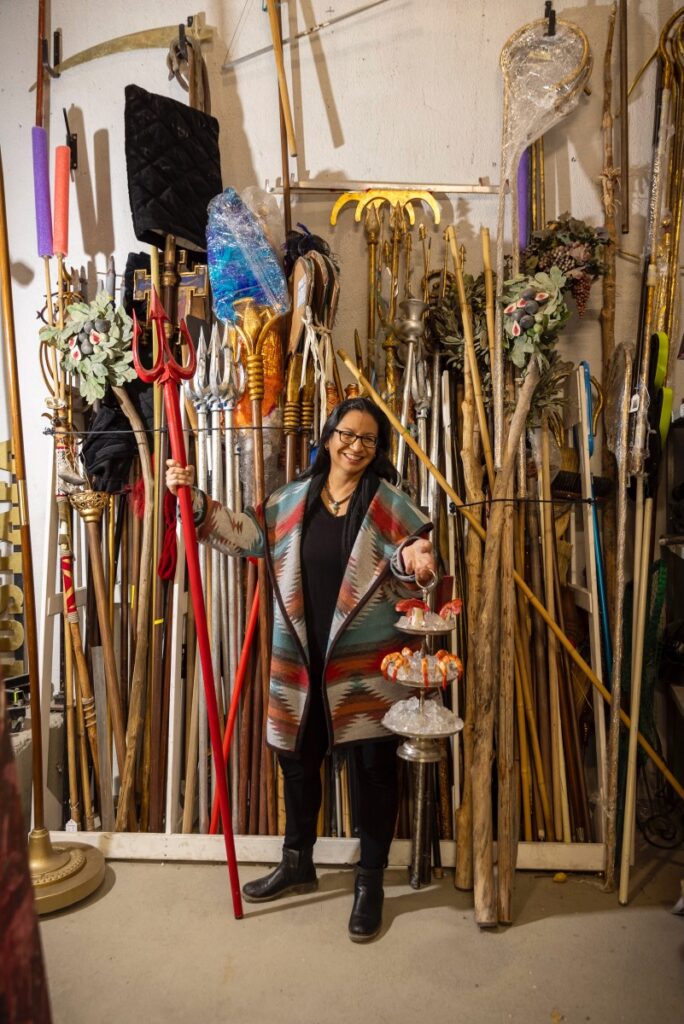
Making Worldwide Productions Santa Fe’s Own
Wagner’s Die Walküre is often performed as part of the full Ring Cycle, but the Santa Fe Opera will be doing it as a standalone. The director, Melly Still, “is doing a beautiful job to bring in the context of the Ring Cycle,” Properties Director Eileen Garcia says, offering the audience the contextual elements that are important to get the most out of the performance. The costuming will pay homage to strong women throughout history. “It’s going to be one of the most original Valkyries, and I’m really excited to see what Melly’s going to do with movement and light,” Garcia says.
Both Gulledge and Garcia’s jobs are hugely complex, requiring left and right-brain thinking. “We’re taking things that are really ephemeral and turning them into physical products,” Gulledge says. The costume shop executes over 600 costumes each season, while the props shop creates, purchases, manages and maintains several thousand pieces. Together they create miniature worlds, as real to performers as to audiences. Creating these illusory realities requires attention to the smallest details.
One example is Mimi in La Boheme, who supports and expresses herself artistically by creating embroidery and silk flowers. “You’re not going to have a Mimi where she’s not coughing into a handkerchief,” Gulledge jokes — so the costume shop and volunteers will hand-embroider handkerchiefs for the singer from patterns of the era. Though audiences won’t necessarily see those touches, Gulledge says, “Mimi will be able to look down and imagine that she created that, and connect with her character — it really gives life to the performance.”
Tailgating… At the Opera?
Tailgating is a treasured opera tradition, and the parking lot—which offers unparalleled views of the Sangre de Cristo and Jemez Mountains — opens three hours before a performance. Opera-goers can bring their own spreads or purchase a tailgate package at the opera. Another dining option is a preview dinner at the open-air cantina, where you can enjoy a buffet-style meal inspired by the production you’re about to see, accompanied by a brief presentation.
There are two pre-show talks prior to each opera, beginning two hours and one hour before the downbeat, where you can learn more about the historical and dramaturgical elements of the show. The ritual of attending the opera, Gulledge observes, is not dissimilar to creating a production: taking the time to dress in your finest or your favorites, enjoy a leisurely meal in a gorgeous setting, and learn more about the history of the music. “It’s a mirror to the opera itself,” Gulledge says.
Story by Annabella Farmer
Photos by Gabriella Marks
Subscribe to TABLE Magazine‘s print edition.

